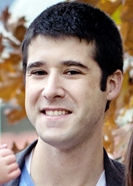Old Faithful…. Hayden Valley…. Mammoth Hot springs. Clearly I am talking about the natural wonders of Yellowstone National Park. Now try and answer the following question: What state does the majority of the park reside in? The choices are: (a) Idaho; (b)South Dakota; (c) Wyoming; (d) Montana. If you correctly picked Wyoming, you clearly know too […]
It gives me great pleasure to introduce our new Digital Associate Editor, Dr. Anja Jamrozik, who joined our team a few weeks ago. Welcome, Anja, great to have you on the team. For future reference, Anja’s Psychonomics bio page is here, and she will be publishing her first post as Digital Associate Editor tomorrow. It’s actually her […]
Generating the angular velocities of planetary and annular gears: When self-generating explanations helps learning Tell me, how does a differential work? Can you explain it to me? All of us who drive or ride in cars rely on a differential to get us around corners under power, and yet not all of us know that […]
When more information leads to greater willingness to sacrifice: moral dilemmas and utilitarian accessibility Can it be moral to kill? Can we sacrifice a life to save many others? Or is killing always wrong? This fundamental question looms large in the philosophy of ethics. On the one hand, deontologists such as Immanuel Kant, argue that the morality […]
We owe most of our visual acuity to our fovea, the area of the retina that is most densely packed with photo-receptive cones. Whenever we focus on an object, we move our eyes so that the image is projected onto this area that contains nearly 150,000 cone receptors per square millimeter. Anything that is projected onto […]
We are all part of a culture: certain behaviors and practices are deeply ingrained in our society and, by implication, in all of us. For example, one strongly normative behavior in the United Kingdom is to queue politely for the bus or the checkout in the supermarket. (Apparently this norm is so strong that disproportionately […]
How are the meanings of words, events and objects represented and organized in the brain? When we think of a dog, what representation are we invoking? Is there such thing as an abstract dogness—the doggiest of all dogs—or do we merely remember one of many stored exemplars of dogs that we have encountered in our lives? (If […]
Eye movements offer unique insight into the functioning of the human mind. We have discussed eye movements on this blog repeatedly. For example, we have learned that while listening to music people move their eyes in a manner that is suggestive of attention being focused inward. Eye movements can also reveal whether or not people are distracted […]
The special issue of Psychonomic Bulletin and Review, in conjunction with the digital #symbodiment event, represents an effort to take stock of the “embodiment vs. symbols” debate that has garnered an increasing amount of attention in the field. In this commentary, I present a few thoughts about the successes and failures of the embodied research program, and offer some thoughts on the road forward. […]
(This post is an edited and abridged version of the opening article to the #symbodiment special issue of the Psychonomic Bulletin & Review authored by Bradford Z. Mahon and Gregory Hickok. The full article can be found here.) The question of how word, object, event and action meanings are represented and organized in the brain has […]

